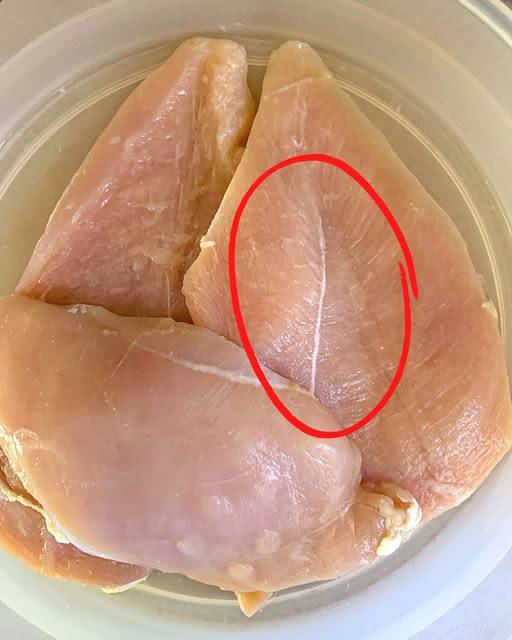White stripes on chicken, or “white striping,” is a phenomenon that has been studied extensively by nutritionists and veterinarians. In this article, we’ll explore what white striping is and what consequences this myopathy may have.
The distortions caused by the food industry, particularly the rapid growth of chickens, raise important concerns. One such issue is the appearance of white stripes on chicken breasts, leading many to wonder what they are and whether they pose a health risk. White striping is a direct result of intensive farming practices, especially with broiler chickens. But should we be concerned? Here’s everything you need to know about white striping on chicken, a phenomenon that has gained attention in recent years.
<h3>White Stripes on Chicken: What Are They and Are They Edible?</h3>
According to Animal Equality, chickens are the most exploited land animals on the planet. Intensive farming practices have led to various issues, including the white striping of chicken, which manifests as streaks of fat on the meat.
This defect, technically known as “white striping,” was recognized as an emerging abnormality in poultry meat as early as 2013. The white stripes are essentially accumulations of fat. These stripes are more common in heavy, fast-growing chickens, particularly in males bred for rapid growth and high pectoral muscle performance.
From a pathogenic perspective, research indicates that the rapid growth of pectoral muscles is associated with metabolic stress, which promotes degenerative changes in muscle fibers. Under this genetic pressure for rapid growth, muscle fibers degenerate and regenerate, altering their size. The spaces left by atrophic fibers are then filled with fat and fibrous tissue, resulting in the white stripes.
While chicken breasts with white striping are safe to eat, they may be downgraded in quality depending on the severity of the defect. This downgrade can be costly for producers since chicken breasts are among the most valuable cuts of meat.
Though white-striped meat is not harmful to consumers, there are concerns about its nutritional value. An increase in fat could lead to a decrease in proteins, vitamins, and other nutrients. Additionally, the taste and texture of the meat may be affected, though there is no conclusive scientific evidence proving significant changes in flavor or nutritional content.
<h3>Other Myopathies in Chickens: Woody Breast and Spaghetti Muscle</h3>
continued on next page<!–nextpage–>
<h3>Other Myopathies in Chickens: Woody Breast and Spaghetti Muscle</h3>
“Myopathy” refers to conditions that damage voluntary muscles, also known as striated muscles. White striping is not the only myopathy linked to the rapid growth of chickens. Research by Professor Shai Barbut from the Food Science Department at the University of Guelph, Ontario (Canada), has identified three major myopathies commonly found in chickens:
<ul>
<li><strong>White striping</strong>, which appears as parallel stripes on the surface of the pectoral muscle.</li>
<li><strong>Woody breast</strong>, characterized by the accumulation of connective tissue and fat within the pectoral muscle.</li>
<li><strong>Spaghetti muscle (spaghetti meat)</strong>, where the muscle fibers separate, giving the meat a stringy texture.</li>
</ul>
<h3>The “Spaghetti Meat” Phenomenon</h3>
These myopathies are associated with rapid growth and larger chickens. They are primarily linked to the speed of growth at a particular age, rather than just the chicken’s weight. Woody breast is caused by a metabolic disorder resulting in abnormal fat accumulation in the breast muscle. Although not harmful to humans, this makes the meat tough and unpleasant to eat. Spaghetti muscle, often confused with white striping, causes a stringy texture. It results from the chicken’s inability to supply enough oxygen and nutrients to the muscle fibers due to rapid growth, leading to fiber degradation and fibrosis.
<h3>Commercial Impact</h3>
The commercial implications of these myopathies should not be underestimated. Chickens affected by severe cases of these conditions are often deemed unsellable due to the defects in the meat. However, in less severe cases, the chickens are still sold. While the long-term effects on taste and nutrition are not fully understood, these defects can affect the quality of the meat.
<em><strong>see continuation on next page</strong></em>
ADVERTISEMENT

